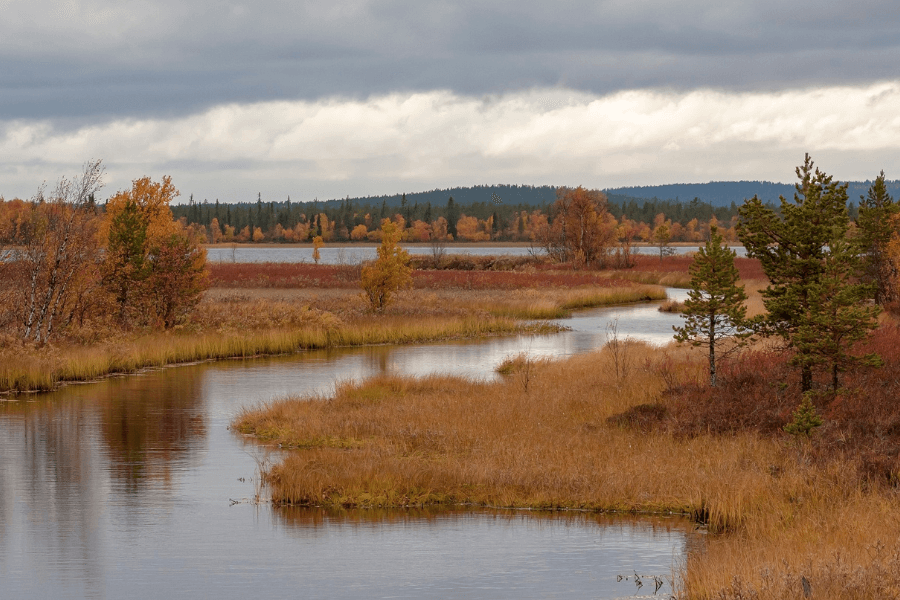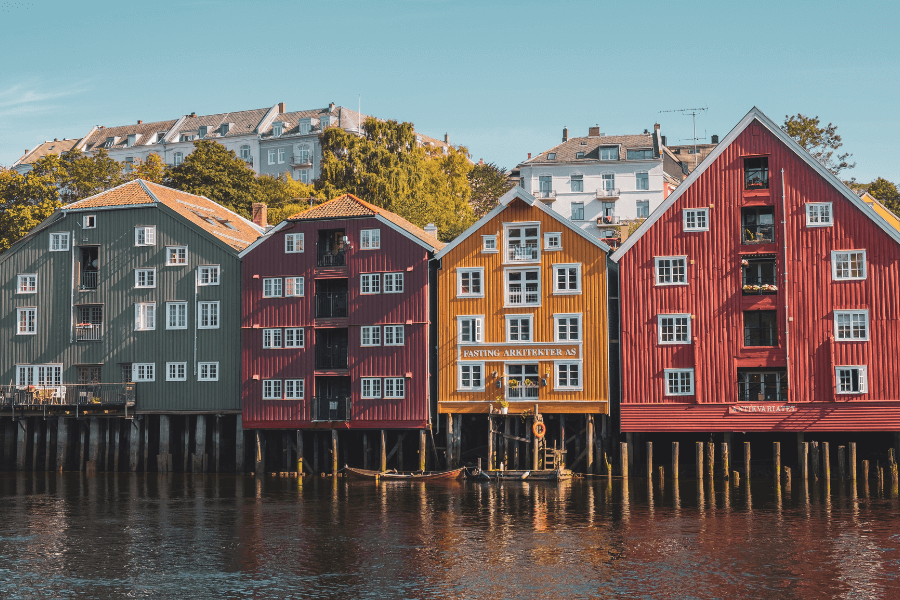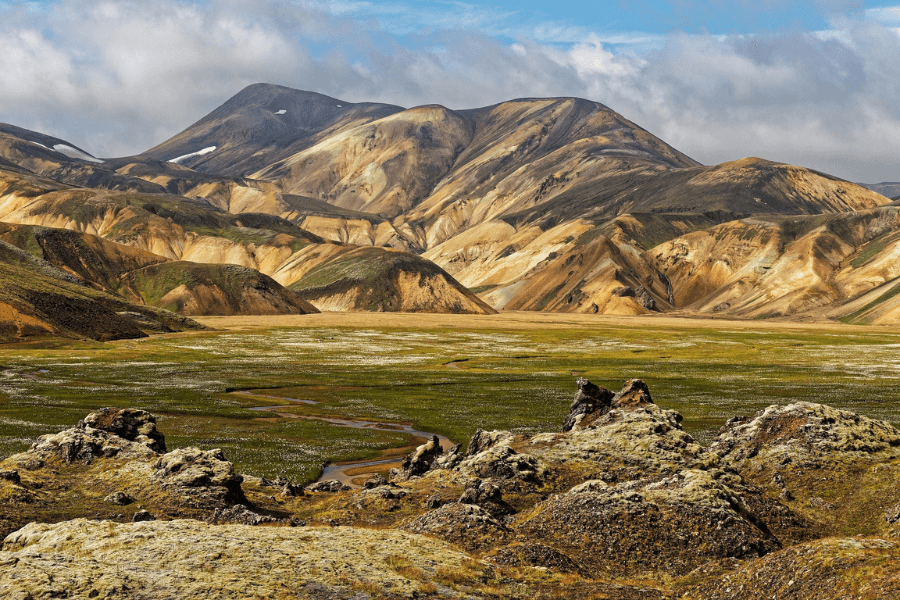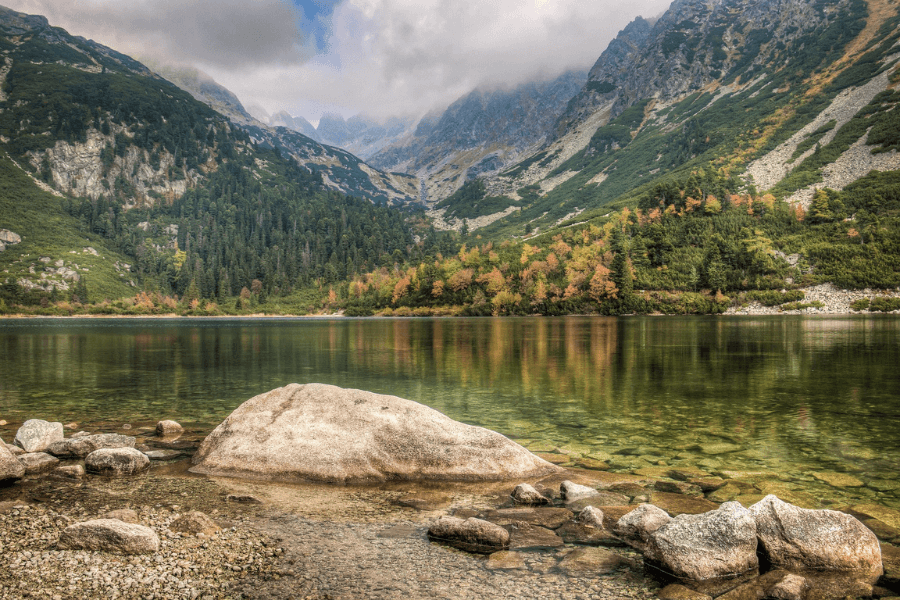9 unusual autumn treks in Europe
The summer is almost over and we have no choice but to curl up at home in front of a warm fireplace? No way! How about we brighten your mood a little and tell you that autumn is a much better season in terms of trekking? No more mosquitoes, no more high temperatures, and above all, fewer hikers occupying the scenic mountain trails. Let yourself be enchanted by autumn treks that reward you with perfect views.
The best treks in the Nordic countries
Denmark, Finland, Norway, Iceland and Sweden. These countries definitely have a lot to offer to tourists and whichever you choose, you won't regret it. We have prepared a small taste of treks including Kungsleden, St. Olav's way and Laugavegur trail.
Kungsleden (Sweden)
420 km, 21 days
One of the most beautiful long-distance routes in Sweden. It starts above the Arctic Circle in the village of Abisko on Lake Torneträsk and ends in Hemavan. You can enjoy the beautiful and untouched landscape of Lapland, endless tundra, a landscape dotted with mountain peaks, with lots of rivers, lakes and wetlands, and you might even meet wild reindeer.
Since not everyone can afford 3 weeks off, it is possible to split the Kungsleden into 3 separate stages. You will sleep in a tent (camping is allowed along the entire route except in the Abisko National Park), and a network of mountain huts is available on some sections. In some of them you can even stock up on a limited basis, but expect high prices.
Also be prepared to cross several lakes along the way, which means paying for a motorboat transfer if you don't want to row several kilometres on your own. In addition, you'll go long stretches without a mobile signal (satellite phones are usually available at the lodges for emergencies). On this trek, you will simply enjoy the freedom of being on your own.
In terms of temperatures and weather stability, it's best to go in summer, but as is usual for the north, you'll be accompanied by clouds of mosquitoes everywhere. In spring and autumn, you don't have to worry about bloodsucking insects, you'll be almost alone on the trail and enjoy truly unique scenery. But be well prepared for weather fluctuations, swollen rivers and temperatures that can drop below freezing. With the right winter gear, the Kungsleden can also be skied in winter, but you really mustn't underestimate your preparation here.

Autumn in Lapland has its own charm. But be prepared for weather extremes.
St. Olavsleden (Norway, Sweden)
580 km, 30 days
This Swedish-Norwegian trek follows the escape route taken by St Olaf, the Viking king who spread Christianity in Scandinavia in the winter of 1028-1029 AD. But this is no ordinary trek. In fact, it is the world's most northerly pilgrimage, linking the Baltic and Atlantic coasts and ending at the impressive Nidaros Cathedral in Trondheim.
You'll see a minimum of tourists on the St. Olavsleden trail, which starts in Selånger, Sweden, and takes you through a little-explored inland landscape. It passes through picturesque towns where it's possible to find roofed accommodation and replenish your food supplies. If you go outside the summer season, expect snow in May or September..
But Olavsleden is just one of the seven St. Olav Ways, a network of pilgrimage trails leading to Trondheim Cathedral. If you're short on time and more tempted by fjords, mountains and steep climbs instead of inland, take the Valldalsleden (Valldal - Lesja - Dovrefjell) route, which is 150km long and can be walked in 7 to 8 days. This route is one of the more physically demanding due to the varied terrain and you should also expect poor mobile coverage. However, there are also opportunities to stay under a roof here. If that's not enough, you can connect to the Gudbrandsdalsleden route in Dovrefjell, which continues to Trondheim.

St Olav Ways (Olavsleden is one of them) meet in Trondheim, Norway.
Laugavegur trail (Iceland)
55 km, 2-4 days
The Laugavegur trail starts in the Landmannalaugar area and ends in the Thorsmork area. This is one of the most famous and popular trails you will find in Iceland. On the way, you will have an extraordinary experience as you cross the Rainbow Mountains, which have captivated a large number of tourists thanks to their specific appearance.
If you want to spend two more days in the beautiful Icelandic landscape, we recommend extending your trip with the two-day Fimmvorduhals trek, which takes you to Skógafoss waterfall. Along the way you will of course find roofed accommodation options, which are best booked in advance. But you can also use campsites, which are also available along the route.

Even though the photos of the Rainbow Mountains in Iceland are almost notorious, they never get old.
Where to go trekking in Central Europe?
Would you prefer to trek the Tatra mountains main tourist path (Tatranská magistrála) in the country of our neighbours? The Tour de Mont Blanc pilgrimage across France, Italy and Switzerland? Or do you prefer to climb Triglav?
Tatra mountains main tourist path (Tatranská magistrála) (Slovensko)
52 km, 2-3 days
The High Tatras offer a comfortable scenic route called the Tatranská magistrála, which will appeal especially to lovers of less time-consuming treks. The trek starts in Podbanské, from which you can follow pleasant stone paths to Lomnický štít (2 634 m above sea level) and Bílé pleso. If you like the Tatra mountains main tourist path, it is possible to extend your stay and go through Kopské sedlo to Tatranská Javorina.
Due to the smaller number of tourists, we recommend that you take the route in autumn, preferably in September. Do not forget to be prepared for the weather, which is often changeable in the Tatras. Proper equipment and quality clothing are one of the criteria thanks to which the locals will not make fun of you.

It is not a demanding long-distance trek in the truest sense of the word, but do not underestimate the autumn Tatras.
Tour du Mont Blanc (Switzerland, Italy, France)
150 km, 7-10 days
The trek through Switzerland, Italy and France to the summit of Mont Blanc (4,809 m) is one of the most popular in Europe. It is a unique circuit around glacial massifs that you can follow clockwise or anti-clockwise. There is also a choice of easier and harder options. Along the way you will pass through majestic mountain saddles, hike along ridges, hillsides, along untamed rivers and visit historic mountain villages.
Add an extra day to your itinerary if you would like to take a cable car trip up the slopes of Mont Blanc from Courmayeur to Chamonix and see the colossal Mer de Glace glacier (the Sea of Ice). There are huts, campsites and bivouacs along the route, so you don't have to worry about not having a place to stay overnight.
Trail around Triglav (Slovenia)
25-35 km, 2-3 days
The starting point of the trip is located at the beautiful glacial Lake Bohinj, which will enchant you with its beautiful nooks and crannies of the once present glacier. On the trek you will come across many other interesting places where nature is almost untouched by the presence of man. You'll pass by picturesque lakes, see the white peaks of majestic Triglav (2,864 m above sea level) and spend a few nights in cosy mountain huts or at designated overnight accommodation. Besides, you don't have to worry about having enough to eat, there are several mountain huts along the way where you can buy a hot lunch or dinner.
There are again several different routes to choose from. You can get to the top of Triglav by ferrata or by a less demanding route around Dom Planika. Overall, you have a relatively free hand when trekking in the Triglav area when choosing a route, the huts are about 2 hours apart, so in case of an emergency you have a safe shelter nearby.

The trek around Triglav starts at the beautiful Lake Bohinj.
And where to go in the south?
We will end our journey by introducing the 3 most visited routes in places located in the southern parts of Europe. These are Corsica, Greece and Santiago de Compostela.
Corsika: GR20 (France)
200 km , 14 days
The Corsican Alps are popular among high-altitude hikers mainly because of their wildness and solitude. You won't encounter a large number of tourists on the trails, which will allow you to enjoy the trek properly. The Corsican route called the GR20 ridge route will take you through beautiful coves, sandy beaches, dense forests and clear lakes. In case you want to shorten the route, it is possible to walk only the first half and shorten your trip to just a week.
Also worth a visit are the vast canyons of de la Vacca and de la Purcaraccia, which are reminiscent of the majestic canyons of American westerns. The GR20 ridge is renowned as one of the most challenging treks in Europe. We therefore recommend that you do not underestimate your preparation and prepare for both poorer food availability and the risk of heavy snow and low temperatures.

The GR20 will show you the wild side of Corsica.
The Corfu Trail (Greece)
220 km, 9-10 days
Greece is a destination most people would probably go to for its beautiful beaches and sunbathing by the sea. However, not many people know that there is an official long-distance trail on the island of Corfu. Along the way you can enjoy picturesque Greek villages, olive groves, vast beaches, mountain peaks and sand dunes. And how about combining hiking with a nice lie-in by the sea after a busy day? That's just awesome.
There will be no shortage of water, food or very cold temperatures on the way. Your biggest enemy on Corfu is likely to be the elusive mosquito. For this reason, it's best to go on the trek in autumn, but make sure you pack a powerful repellent as you may not be able to avoid the pesky insects even in colder temperatures.
Santiago de Compostela (Spain)
780 km, 4-5 weeks
Of course, our list of favourite treks would not be complete without the legendary pilgrimage to Santiago de Compostela, which many describe as the experience of a lifetime. The main route is called the Camino Francés, is 780 kilometres long and will take you between 4 to 5 weeks to complete. But if you don't have that much time, you can take the shorter routes, which are around 100 kilometres and can easily be done in one week.
The pilgrimage to Santiago de Compostela is relatively easy, both in terms of the paths you will take and the accommodation. The locals have adapted well to the needs of pilgrims over the years, and you'll find a number of hostels and hotels along the main routes where you can shower or have a hearty breakfast for a fee.
Keep in mind, however, that you will probably never be completely alone on the trail, which is why it's worth making the trek in spring or autumn, when you can at least avoid the biggest crowds.
Readers are further interested
















































































